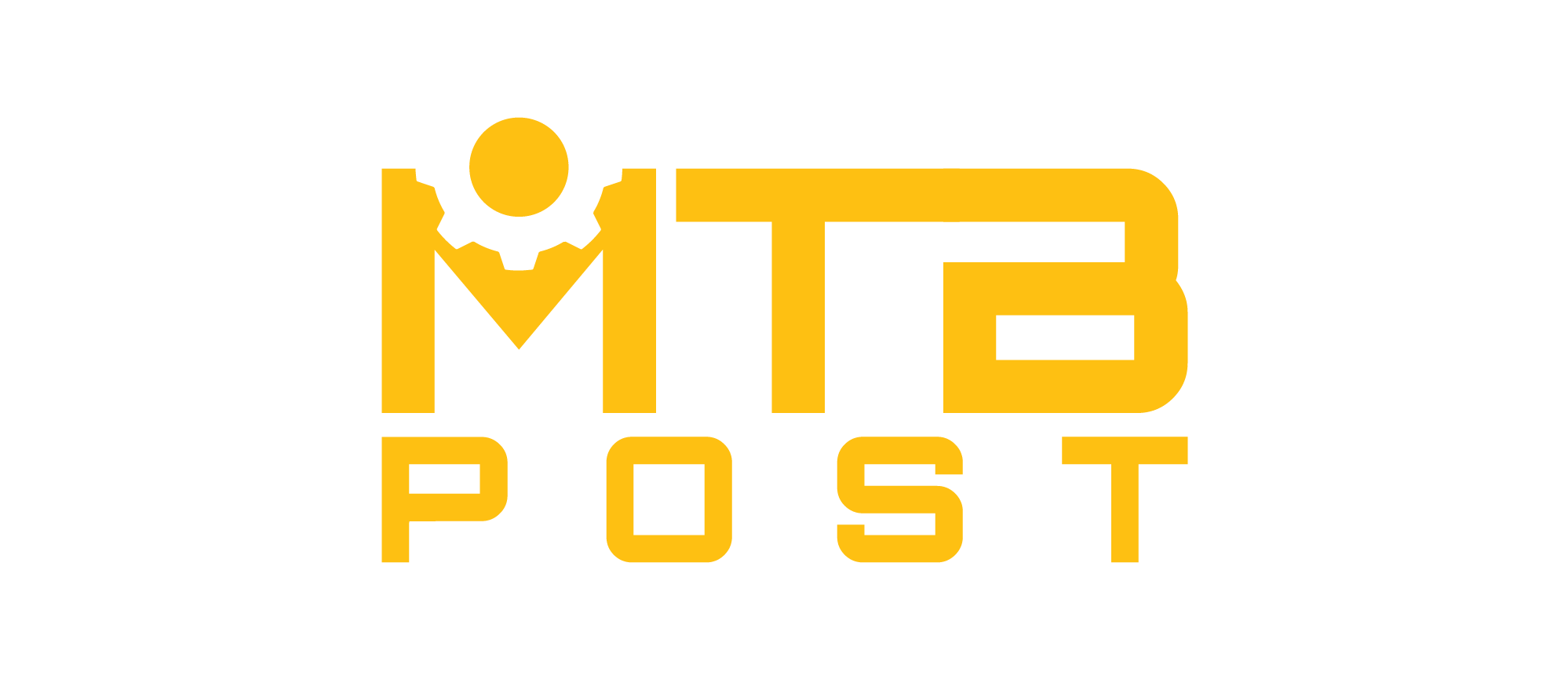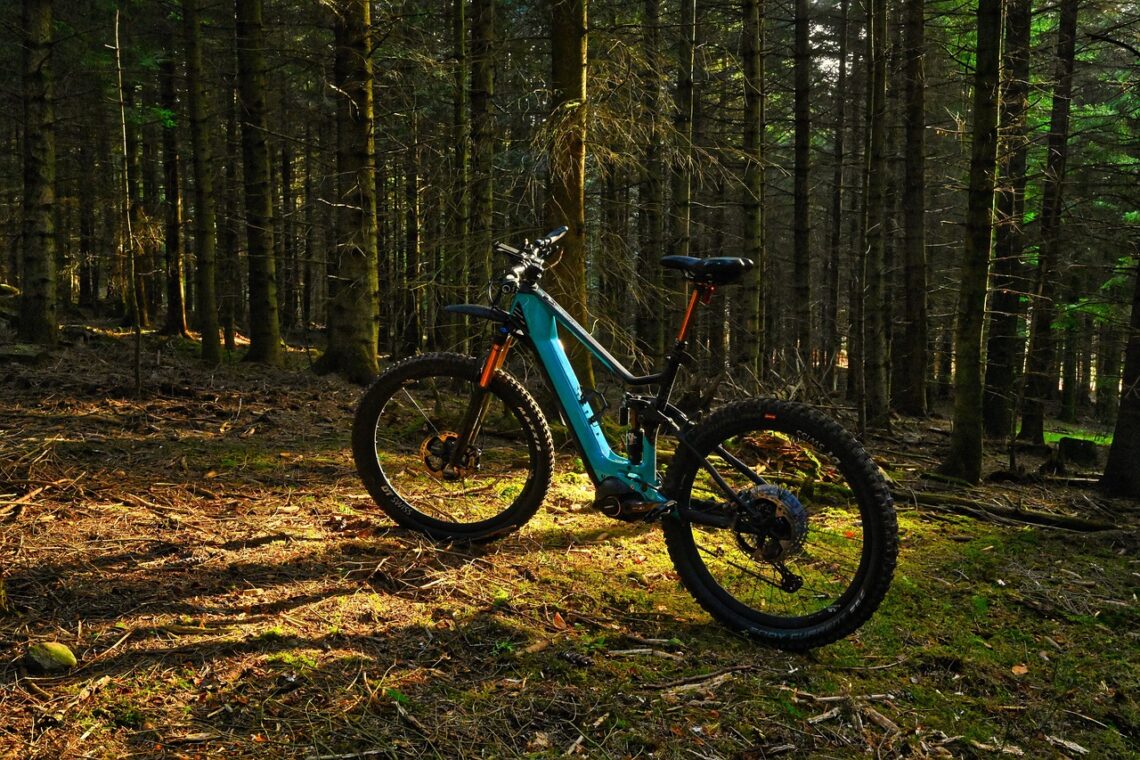
Should You Convert Your eMTB To Mullet?
In the world of mountain biking, ‘mullet’ means a mixed-wheel bike. Other than that, mullet is also a hairstyle (look it up), but that’s not really why we are here. Although many new eMTBs are fitted with 29-inch wheels for the front and rear, you can get a mixed-wheel eMTB from factory like the Canyon Spectral Mullet CF 8. This bike has a 29-inch wheel in the front, and a 27.5-inch wheel in the back.
A smaller rear wheel can make your bike feel more lively as the lighter rear end makes it easier to change direction quickly on a tight set of corners. If you like the sound of that, you might be considering to convert your 29er eMTB to mullet. Is it actually an upgrade and is it just a matter of fitting a 27,5-inch rear wheel?
To find out whether it’s worth doing this conversion on an eMTB, I’ve done a lot of research on this topic. I want to share my findings through this article. We’ll go through how to properly mullet your e-bike, what the pro’s and cons are and some advise. Mulleting your bike isn’t as straightforward as you might think!
What Is A Mullet Setup?
A mullet bike (also: mixed-wheel or MX) is a mountain bike with two wheel sizes; a larger wheel in the front, and a smaller wheel in the back. The thought behind this setup is that the bigger front wheel rolls easily over holes and bumps, and therefore gives the rider grip and control over the bike. The smaller rear wheel however, makes the bike feel light and easy to maneuver through corners. You are also less likely to catch your ass on the rear wheel (butt buzz).
In practice, a mullet is often picked by shorter riders, as the bike can feel less cumbersome and more involving than a 29-inch bike. But that comes down to personal preference.
Whether a mullet is actually faster than a standard bike, depends on the type of terrain and skill of the rider. With a quicker turn in, a mullet MTB can definitely be faster on a tight, twisty section. On a bumpy straight however, the faster rolling 29er will have an advantage.
The Rise Of The Mullet Bike
The concept isn’t new and is actually making a comeback. The first mullet mountain bike dates back to the 80’s with a mullet bike from Cannondale that had a 24/26-inch wheel combination. Unfortunately, the geometry was off and the trend didn’t catch on. Specialized tried it again in 2004 and Trek also in 2009, but unfortunately both without success.
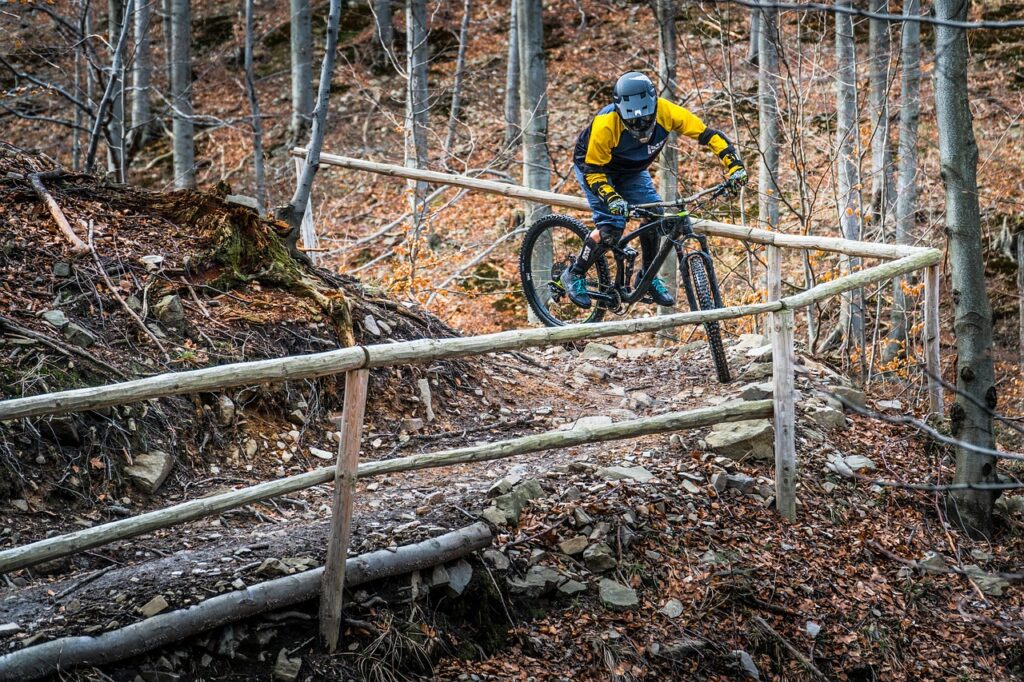
Over the last two decades, people still kept experimenting with the mixed-wheel setup, but it wasn’t until 2019 that the mullet fully made its comeback. This was the year when the UCI, a worldwide organisation that regulates cycling in all forms, approved mullet mountain bikes to be used during their championships. At first, the mixed-wheel setup was exclusively for downhill bikes, but nowadays you’ll also see it on enduro bikes.
The Mullet Electric Mountain Bike
In the world of electric mountain bikes, a mullet-eMTB is slowly making its appearance. Being able to turn in faster could definitely be an improvement for these heavy, long-travel bikes. Some good examples of factory mullet eMTBs, are the aforementioned Canyon Spectral Mullet CF 8, and also:
- Haibike Allmtn2
- Giant Reign E+
- Merida eONE-SIXTY
Are these bikes nothing more than a 29-inch bike with a smaller rear wheel? And could you do this to your own bike? Let’s find out in the next section.
Can You Actually Mullet An eMTB?
The answer to the question above is not as simple as you might think. In short: yes, you can convert your standard eMTB into a mixed-wheel setup. A 27.5-inch wheel will fit just fine. But whether you’ll like the result, is a different story. It takes a lot more to get it right.
Factory mullet eMTBs are actually designed to have a mixed-wheel setup. Designers have spend quite some time in perfecting the geometry so you can have the best performance. Modifying your standard 29er eMTB by fitting a smaller wheel, will mess up the geometry massively. As you’ll later find out, it’s even dangerous to do so!
First, lets go through the impact on the geometry.
You’ll Ruin The Geometry
To gain insight in what exactly what the consequences are of a mullet conversion, I’ve tried this myself on my 2021 Trek Rail 5 in size L. I took some measurements along the way.
In the table below, you’ll find the most important and noticeable changes in geometry.
| Original Setup (29-inch) | Mullet Setup (29/27.5-inch) | Difference | |
| Head tube angle (D) becomes slacker | 64,5° | 62,5° | -2° |
| Seat tube angle (B) becomes slacker | 75° | 73° | -2° |
| Bottom bracket (F) will sit lower | 339 mm | 319 mm | -20 mm |
| Reach (M) becomes shorter | 465 mm | 461 mm | -4 mm |
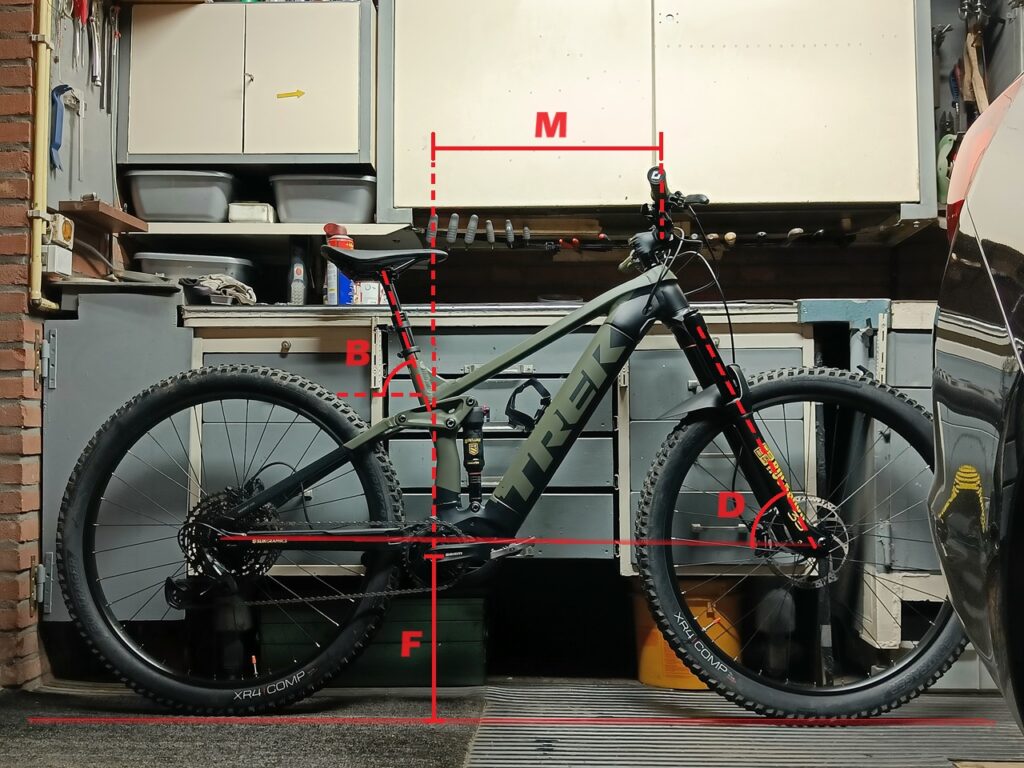
Although the difference in wheel diameter is not that significant, the impact on the geometry is. You’ll definitely notice it when you’re riding the bike for the first time.
The shorter reach and slacker seat tube angle, will give you a more upright and leaned back saddle position. Because of the dropped rear end, the front of the bike will feel a lot higher. The center of gravity has shifted more toward the rear wheel which results in less weight on the front wheel and thus: less grip. As a result, your bike will feel out of balance.
But the most significant and dangerous deviation, is the lowered bottom bracket. In general, a lower BB lowers the center of gravity which is beneficial for stability and cornering. But dropping your bottom bracket with about 2 cm can result in pedal strikes and crashes.
Decrease In Top Speed
Fitting a wheel with a smaller circumference, will lower the speed at which an eMTB motor cuts off. Your display will still show the same speed at which this happens, but your actual GPS speed will be lower. That’s because every time your rear wheel does 1 revolution, your display thinks that you’ve covered a greater distance than you actually did. The deviation in speed would be around 5%.
Especially in Europe, where e-bikes stop assisting above 25 km/h or 15.5 mph, this is not ideal. Luckily, on a lot of displays, you’re able to change the circumference yourself. You can find out whether this is an option for your display in the table below.
| Can you alter the circumference yourself? | |
| Bosch Purion | No, only by dealer |
| Bosch Intuvia | Yes |
| Bosch Kiox | Yes |
| Giant RideControl | No, only by dealer |
| Specialized Turbo Connect | No, only by dealer |
| Brose Display | No, only by dealer |
How To Properly Mullet Your eMTB
I can understand that mulleting your eMTB doesn’t sound very appealing anymore. But fear not, I have a few tips for how to do it properly.
The trick is to try and get as close to the original geometry as possible. This is the only way to get the best performance out of your mullet eMTB. Take some measurements yourself or look up the spec sheet of the manufacturer. If you combine the following tips, you’ll have a chance of getting there.
Use The Flip Chip
Many full-suspension eMTBs are equipped with a flip chip. A flip chip is a small insert that’s often located in the seatstay, and allows the rider to quickly adjust the geometry of his bike. In most cases, the flip chip offers you 2 options; a low and a high setting. Some flip chips also have a middle setting.
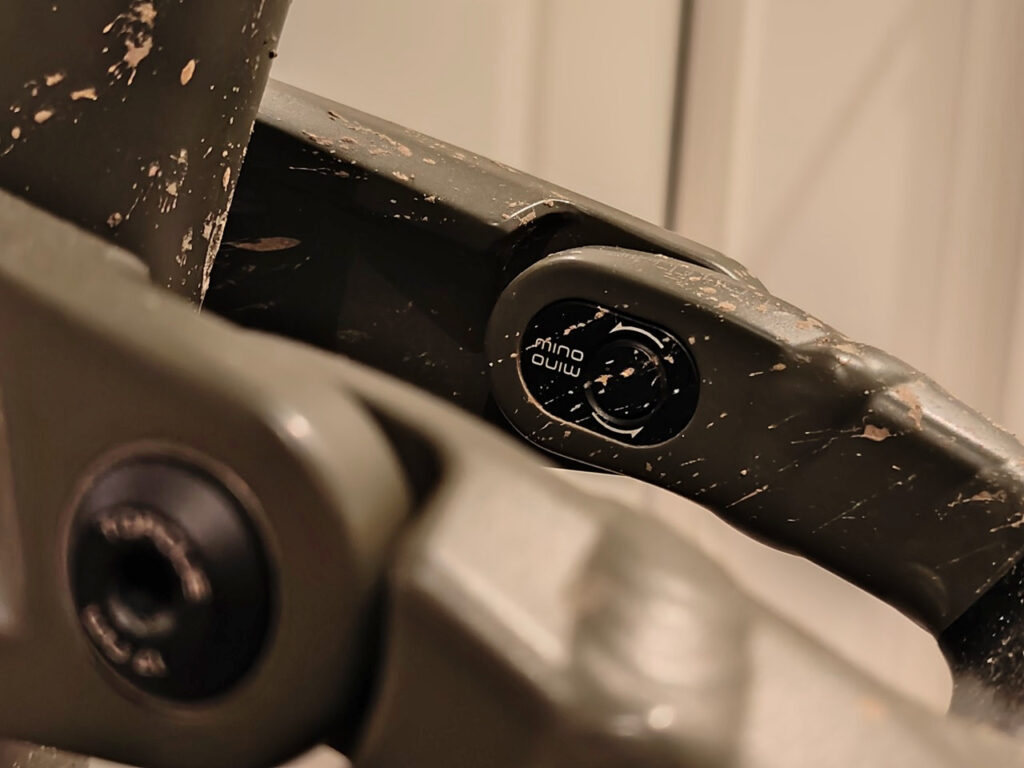
By fitting the chip in the ‘low’ setting, you slacken the head and seat tube angle, and lower the bottom bracket. The ‘high’ setting steepens the head and seat tube angle, and raises the bottom bracket.
When lowering the rear axle by fitting a smaller wheel, you can benefit from flipping the chip to the ‘high’ setting. So what do you actually gain from this? Well, that depend on your eMTB of course. But in general, we can say that you’ll raise your BB with 5 mm and steepen your head tube angle with 0,4°. Every bit helps!
Fit A Longer (And Angled) Stem
Although the change in reach of 6 mm doesn’t seem like a lot, it’s definitely noticeable. That’s also why manufacturers offer stems with 5-10 mm increments.
Fitting a longer stem will increase the reach of your bike. If you go for a longer and also angled stem, you’ll lower your handlebars and get closer to the original setup.
Fit A Wider Rear Tire And A Narrower Front Tire
This may seem a bit contradictory, but the best way to raise your bottom bracket after converting your eMTB to mullet, is to fit a wider rear tire and a narrower front tire. A wider rear tire has a larger outer diameter and thus higher. This reduces the difference in diameter between the two wheels. For example, you could fit a 27.5 x 2.60 in the rear, and a 29 x 2.40 in the front.
Doesn’t this undo the whole theory behind a mullet I hear you think? Well, no: your rear wheel will still be smaller, lighter and sturdier and your bike will still feel more agile.
Fit A Shorter Crank
If you’ve tried your best to raise the bottom bracket but you’re still getting pedal strikes, than you might want to consider a shorter crank. This will give you some much needed ground clearance. But before going all the way and pick the shortest cranks you can find, please consider the following.
If you go from, let’s say, a 165 mm crank to a 150 mm, you are massively reducing your standing platform. Your pedals are simply closer to each other which will make you feel less confident and in control on steep descents. Also, you’ll need to raise your saddle height because your pedal strokes aren’t as deep as they used to be. And last, a shorter crank reduces the amount of torque that you can deliver, so you will have a tougher time on steep gradients.
Based on my own experience, 160 mm is the optimal crank length for an eMTB. With these, you’ll have enough ground clearance while maintaining a comfortable and natural pedal stroke.
So, Should You Mullet Your eMTB?
There’s no clear answer to whether your should mullet your eMTB. It completely comes down to your own preference. Luckily, there are a few indicators that should help you with making the right discussion.
In my opinion, I’d say that a long and heavy eMTB can definitely benefit from a mullet setup. The lighter rear end will make your bike feel more agile in sharp turns. The smaller rear wheel also increases your range of movement and reduces the chance of butt buzz.
But it is worth mentioning that shorter riders (<170 cm / 5’5 ft), will benefit the most from a mullet setup. Longer riders won’t feel as much of a difference.
If you want to give it a try and convert your own 29-inch eMTB to a mixed-wheel setup, it can definitely be done. But you will need a bit more than just a 27.5-inch wheel. Keep in mind that fitting a smaller rear wheel, will mess with the geometry by lowering your bottom bracket, slackening your head and seat tube angle and shortening your reach.
The trick to get your mullet-converted eMTB to ride as good as possible, is to try and stick to the original geometry as much as you can. To achieve this, you’ll first need to put the flip chip in the ‘high’ position. Then you’ll need to fit a wider rear tire, narrower front tire, longer stem and optionally a short crank.
But by far the best way to obtain a mullet e-bike, is to buy a factory mullet eMTB. These bikes are designed to have a mixed-wheel setup with the right geometry. Try one out if you can!
Frequently Asked Questions
A mullet drivetrain is often found on a gravel bike. It consists of road bike drop bar shifters, combined with a mountain bike derailleur and cassette. It offers the rider a wider range in gears.
A mullet electric mountain bike is believed to be a bit faster on twisty, technical sections. But the setup is actually more about the feeling and personal preference rather than it being faster.
Yes, you can put a smaller wheel on an eMTB. It is advised to alter the circumference within your display settings to prevent lowering your speed limiter.


